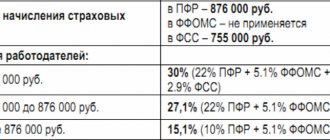Definition
OS includes property and items that take part in the organization’s activities (production or trade). Key point: they retain their shape almost unchanged. They can also be rented out.
Let's look at fixed assets. Examples will help us with this. Let's take, say, a computer. Nowadays, almost no workplace can do without a PC. It is the subject of labor, without it the employee will not be able to fulfill his duties. However, a computer may not be the main tool if we are talking about a company that sells computer equipment.
The following examples are an office building, a company car, equipment. These items also take part in the production process at the enterprise. But, for example, scissors cannot be classified as a fixed asset, despite the fact that they are also a tool of labor. These are materials.
Indeed, determining whether a particular property is a fixed asset or not is not always a simple task. But let's try to figure it out.
Accounting: cost reflection
In accounting, all costs associated with the construction (manufacturing) of an object (the cost of the contractor’s work, materials consumed, equipment transferred for installation at the site, etc.) are reflected in account 08-3 “Construction of fixed assets”. In this case, make the following entries:
Debit 08-3 Credit 60 (76) – reflects the cost of contract work for the construction of a fixed asset facility (based on forms No. KS-2 and No. KS-3);
Debit 08-3 Credit 07 - reflects the cost of equipment transferred for installation to a contractor in a facility under construction;
Debit 08-3 Credit 23 (25, 26, 70, 76...) - reflects other costs associated with bringing the object to a condition suitable for use;
Debit 19 Credit 60 (76) – reflects VAT claimed by the contractor, as well as other costs associated with the creation of fixed assets.
Criteria for the allocation of fixed assets
To simplify, a number of features have been developed that an operating system should have from an accounting point of view. The issue is described in detail in PBU 6/01.
Criteria:
- The property was acquired in order to solve production or management problems at the enterprise, or for lease.
- The service life of the object is a year or more.
- The property was not purchased for the purpose of selling it.
- The object has the ability to bring benefits to the company and was acquired in order to generate income.
In tax accounting there is also a cost criterion: over 40 thousand rubles. There is no such requirement in accounting, but in order not to create differences in accounting and additional inconveniences, the cost criterion is used in both cases. Everything purchased at a price of less than 40 thousand rubles can be classified as inventory. For management accounting purposes, the principles for defining an object as an operating system can be developed by the organization itself.
It is extremely important to correctly allocate objects to the group of fixed assets. Mistakes can lead to incorrect assessment of property taxes and, consequently, to troubles when audited by regulatory authorities.
Let's consider accounting for fixed assets and postings in stages - starting with the appearance of equipment at the enterprise and ending with disposal.
OS in accounting
An asset is accepted for accounting as fixed assets if the following conditions are simultaneously met (clause 3 of PBU 6/01):
- the object is intended for use in the production of products (when performing work, providing services), for the management needs of the organization, or for provision by the organization for a fee for temporary possession and use or for temporary use;
- the object is intended to be used for a long time, i.e. a period of more than 12 months or a normal operating cycle if it exceeds 12 months;
- the organization does not intend the subsequent resale of this object;
- the object is capable of bringing economic benefits (income) to the organization in the future.
We invite you to familiarize yourself with the procedure for obtaining a spouse’s consent to sell real estate (part two)
Fixed assets are accepted for accounting at their original cost, the procedure for determining which depends on the method of receipt of the object by the organization (for a fee, as a contribution to the authorized capital, free of charge or under an exchange agreement).
| Operation | Account debit | Account credit |
| Accrued depreciation of fixed assets | 20 “Main production” 25 “General production expenses” 26 “General business expenses” 44 “Sales expenses” 91 “Other income and expenses”, subaccount “Other expenses” | 02 |
| Depreciation of an asset is written off upon disposal | 02 | 01 |
| The residual value of an asset is written off upon its disposal (sale, disposal, etc.) | 91, subaccount “Other expenses” | 01 |
| The revaluation of fixed assets is reflected in the form of revaluation | 01 "Fixed assets" | 83 |
| The revaluation of fixed assets is reflected in the form of an additional valuation (within the previously carried out markdown attributed to account 91 “Other income and expenses”) | 01 | 91, subaccount “Other income” |
| The revaluation of fixed assets (FPE) is reflected in the form of a markdown | 91, subaccount “Other expenses” | 01 |
| The revaluation of fixed assets is reflected in the form of a markdown (within the previously carried out revaluation attributed to account 83) | 83 | 01 |
- 01 - Fixed assets
- 08 — Investments in non-current assets
- 08.4 — Acquisition of fixed assets
- 19 — Value added tax on purchased assets
- 19.1 — Value added tax on the acquisition of fixed assets
- 50 – Cashier
- 50-1 — Cash desk of the organization
- 51 — Current accounts
- 55 – Special bank accounts
- 60 – Settlements with suppliers and contractors
- 66 — Calculations for short-term loans and borrowings
- 67 — Calculations for long-term loans and borrowings
- 68 — Calculations for taxes and fees
- 71 — Settlements with accountable persons
- 76 - Settlements with various debtors and creditors
- 76.4 — Settlements on deposited amounts
- 91 — Other income and expenses
- 91.1 - Other income
- 91.2 — Other expenses
| Account Dt | Kt account | Transaction amount, rub. | Wiring Description | A document base |
| Construction of fixed assets | ||||
| 60 (76) | 51 | 59 000,00 | Payment to the contractor for services provided | Account, bank statement |
| 08 | 10 | 100 000,00 | Materials for the construction of the facility were transferred by contract | Invoice-movement |
| 08 | 60 (76) | 50 000,00 | Work performed by the contractor is taken into account | Invoice, certificate of completed work |
| 08 | 60 (76, 23, 25, 26) | 40 000,00 | Overhead costs for the construction of the facility | |
| 19 | 60 (76, 23, 25, 26) | 34 200,00 | VAT is displayed for all operations related to the construction of a fixed asset | Check |
| 68 | 19 | 19 800,00 | Amount of VAT claimed for deduction | Check |
| 01 | 08 | 190 000,00 | The main facility put into operation | Certificate of acceptance and transfer of inventory item (OS) |
| Purchase of fixed assets (equipment purchased) | ||||
| 60 (76) | 51 | 118 000,00 | Seller's invoice paid (including VAT) (purchase of fixed asset) | Account, bank statement |
| 08 | 60 (76) | 100 000,00 | Capitalization of acquired fixed assets to the balance sheet of the enterprise | Invoice, invoice, certificate of completion of work |
| 60 (76) | 51 | 11 800,00 | Payment for transportation and installation | Account, bank statement |
| 08 | 60 (76) | 10 000,00 | Costs associated with transportation and installation of fixed assets | Certificate of completed work, consignment note |
| 19 | 60 (76) | 19 800,00 | Displays VAT on transactions related to the acquisition, transportation and installation of fixed assets | Check |
| 68 | 19 | 19 800,00 | Amount of VAT claimed for deduction | Check |
| 01 | 08 | 110 000,00 | The main facility put into operation | Certificate of acceptance and transfer of inventory item (OS) |
| Contributions to the authorized capital | ||||
| 08 | 75 | 52 000,00 | The fixed asset was contributed as a contribution to the authorized capital | Constituent documents |
| 08 | 60 (76) | 5 000,00 | Costs associated with transportation of fixed assets | Transfer and Acceptance Certificate |
| 19 | 60 (76) | 900,00 | VAT shown on delivery costs | Check |
| 68 | 19 | 19 800,00 | Amount of VAT claimed for deduction | Check |
| 60 (76) | 51 | 5 900,00 | Payment of transportation bill | Account, bank statement |
| 01 | 08 | 57 000,00 | Putting the facility into operation | Certificate of acceptance and transfer of inventory item (OS) |
| Acquisition using targeted budget funding | ||||
| 08 | 86 | 150 000,00 | Obtaining fixed assets through a targeted financing program | Check |
| 01 | 08 | 150 000,00 | The facility was put into operation | Certificate of acceptance and transfer of inventory item (OS) |
| 86 | 98 | 150 000,00 | Costs included in deferred income | |
| Free receipt (free receipt) | ||||
| 08 | 98-2 | 40 000,00 | Acceptance of a gratuitously received object for accounting | Buh. reference-calculation |
| 08 | 60 (76) | 8 000,00 | Bringing the gratuitously received object to working condition | Transfer and acceptance certificate, contract |
| 19 | 60 (76) | 1 440,00 | VAT amount displayed | Check |
| 01 | 08 | 48 000,00 | The facility was put into operation | Certificate of acceptance and transfer of inventory item (OS) |
| 60 (76) | 51 | 9 440,00 | Payment for intermediary services | Account, bank statement |
| 68 | 19 | 19 800,00 | Amount of VAT claimed for deduction | Check |
| Exchange for other property | ||||
| 08 | 60 | 150 000,00 | Capitalization of fixed assets under an exchange agreement | Purchase Invoice |
| 19 | 60 | 27 000,00 | VAT amount displayed | Check |
| 01 | 08 | 150 000,00 | Putting the facility into operation | Certificate of acceptance and transfer of inventory item (OS) |
| 62 | 90-1 | 177 000,00 | Revenue from the sale of finished products under an exchange agreement | |
| 90-3 | 68 | 27 000,00 | VAT amount charged | |
| 90-2 | 43 | 115 000,00 | Write-off of the cost of finished products under an exchange agreement | |
| 90-9 | 99 | 35 000,00 | Displaying the financial result for this exchange | |
| 60 | 62 | 177 000,00 | Settlement of the exchange agreement | |
| 68 | 19 | 27 000,00 | Amount of VAT claimed for deduction | |
| Capitalization of unaccounted for objects | ||||
| 01 | 91-1 | 200 000,00 | Capitalization of unaccounted for objects identified during inventory | Buh. certificate-calculation, act of acceptance and transfer of inventory item (OS) |
Reflection of receipts in accounting
Let's now look at the accounting entries for fixed assets. Two accounts are used for accounting: 01 and 08. Both accounts are active.
The peculiarity of accounting is that upon receipt, account 01 “OS” is never used immediately. The entry is made first to the debit of the suspense account 08.
- 08 -60 – this is how the acquisition of property is reflected;
- 01 -08 – a record that the OS was put into operation.
The source of receipt may not necessarily be the supplier. Fixed assets can be donated - 08 -98, contributed as part of the authorized capital - 08 -75. It can be built - 08 -60.
The primary documents are OS-1, OS-1a, OS-1b, OS-14, OS-15. For each received object, an inv. must be filled out. card in the form OS-6, OS-6a, OS-6b.
If an object, for example, a computer, costs less than 40 thousand rubles, then its receipt is recorded as a debit to account 10, and then immediately written off as expenses (account 91). This is the difference between fixed assets and inventories. The cost of fixed assets is written off as expenses gradually through depreciation, and the cost of inventories immediately.
Accounting for settlements with suppliers when purchasing OS
Postings reflecting the acquisition of a fixed asset allow, along with the reflection of debt to organizations, to ensure the correct formation of the initial cost of the fixed asset. For accounting purposes, all costs related to fixed assets are reflected by entries in the debit of account 08 in correspondence with the corresponding accounts. Particular attention should be paid to the procedure for reflecting VAT in accounting:
- if the fixed asset is planned to be used in activities, the results of which are subject to VAT, then it is subject to reimbursement from the budget;
- otherwise, the VAT amounts issued by the supplier should be included in the cost of the fixed asset.
| Account Dt | Kt account | Wiring Description | Transaction amount | A document base |
| Postings on receipt of fixed assets for production purposes involved in activities subject to VAT | ||||
| 08.4 | 60 | The cost of the OS object is taken into account. debt to the supplier is reflected | price without VAT | |
| 19.1 | 60 | VAT charged by the supplier is taken into account | VAT | |
| Postings for the receipt of a fixed asset that is NOT involved in activities subject to VAT | ||||
| 08.4 | 60 | The cost of the OS object is taken into account. debt to the supplier is reflected | Value with VAT | |
| Suppliers' invoices for received operating systems have been paid | ||||
| 60 | 50-1 | In cash from the company's cash desk | ||
| 60 | 51 | By cashless transfer from the company's account | ||
| 60 | 55 | By bank transfer from special accounts of the enterprise | ||
| 60 | 71 | Through an accountable person | ||
Depreciation calculation
In order for the cost of the object to be transferred to expenses gradually, depreciation of fixed assets has been developed. Let's look at the wiring in more detail. Account 02 is used for this purpose.
The essence of depreciation is that the cost of an operating system is distributed depending on its service life, which in other words is called useful use, and is written off monthly as an expense. For this purpose, 10 depreciation groups have been developed. The accountant must determine which of them the fixed asset belongs to independently and determine the term of the fixed asset.
There are four methods for calculating depreciation; the organization indicates the one chosen in its accounting policy. Again, in order to avoid differences between accounting and tax accounting, linear accounting is most often chosen. That is, they divide the cost by the number of months of useful use and write it off as expenses in equal shares.
Depreciation of fixed assets has the following form: 20 (44) - 02. After the service life has passed, according to Kt 02 an amount equal to the original cost of the property will be collected. Then the accountant will make an entry 02 - 01. The fixed assets will be completely depreciated and will no longer be on the balance sheet.
Accounting for fixed assets upon admission to budgetary institutions
In accordance with paragraph 21 of Order No. 157n, the concept of “budget accounting of fixed assets” applies only to certain government organizations. For example, government institutions, government agencies, extra-budgetary funds. In addition to the unified chart of accounts, a special chart of accounts must be used in budget accounting (Order of the Ministry of Finance of Russia dated December 6, 2010 No. 162n).
The rest of the state institutions, maintaining accounting and tax accounting of fixed assets in 2019-2020, in addition to the unified chart of accounts, use charts of accounts approved by order of the Ministry of Finance of Russia dated December 16, 2010 No. 174n or dated December 23, 2010 No. 183n (depending on the type of organization) and others regulations.
Read about the regulatory documents governing accounting in budgetary structures here.
In this article we will refer to orders No. 157n and 162n as the basis for budget accounting. From the beginning of 2020, public sector organizations must be guided by the new federal standard “Fixed Assets”, approved. by order of the Ministry of Finance dated December 31, 2016 No. 257n (hereinafter referred to as the Standard). These documents reveal the general principles of accounting for fixed assets, as well as the logic of making transactions.
According to clause 8 of the Standard, in order to classify an asset as a fixed asset, the following criteria must be met:
- Property (with the exception of periodicals that make up the library collection of the subject of accounting) is classified as fixed assets regardless of its useful life.
- The accounting entity predicts the receipt of economic benefits or useful potential from the use of the asset.
- The initial cost of property as an accounting object can be reliably estimated.
If an asset does not meet at least one of the above criteria, it is recorded in off-balance sheet accounts. Information about such material assets is disclosed in the financial statements.
NOTE! Fixed assets do not include objects classified as inventories in accordance with clause 99 of Order No. 157n. For example, fishing gear, gas-powered saws, etc.
Each inventory item as a unit of accounting for fixed assets must be assigned a number. And an inventory card is created for each object.
To account for fixed assets, a synthetic account 010100000 “Fixed Assets” is provided. The budget accounting account number consists of 26 digits, and only 18–26 digits are used in the accounting of the institution. Depending on the group and type of fixed assets, as well as the essence of their movement, the code in the 22–26 digits changes in the account number.
Below we consider the scheme for generating an accounting account number in a budgetary organization, and also decipher the category codes using an example. A detailed explanation of the categories can also be found in clause 21 of the instructions to the chart of accounts (order No. 157n), in the table of the budget accounting chart of accounts and in clause 2 of the instructions to it (order No. 162n).
| Account digit number | ||||
| 18 | 19-21 | 22 | 23 | 24-26 |
| Financial support | Accounting object | Accounting object group | Type of accounting object | Type of receipts, disposals of an accounting object |
| Example: account 110118310 “Increase in the value of other fixed assets - real estate of the institution” | ||||
| 1 | 101 | 1 | 8 | 310 |
| 1 - at the expense of the budget | 101—fixed assets | 1—real estate | 8 - other fixed assets | 310 - increase in OS cost |
Read about creating a working chart of accounts in a budget organization here.
Note that for budget accounting of fixed assets, according to Order No. 162n, only 2 types of financial support are possible: at the expense of the budget (code 1) and funds at temporary disposal (code 3).
Thus, government institutions, government agencies and other organizations falling under the jurisdiction of Order No. 162n cannot have their own non-budgetary income.
OS are received by institutions at actual cost, which includes (clause 15 of the Standard):
- cost paid to the supplier;
- the cost of construction work when creating the facility;
- the cost of all costs required to create the OS;
- fare;
- amounts for related services;
- customs duties;
- as well as other costs associated with the purchase/creation of the OS.
NOTE! If the fixed asset will be used in budgetary activities, then the amount of input VAT is included in the initial cost.
We invite you to familiarize yourself with the Jurisdiction and Jurisdiction of Labor Cases
The receipt of fixed assets is reflected in the synthetic account 0010600000 “Investments in non-financial assets”, which contains 3 grouping accounts:
- 0010611000 - for real estate;
- 0010631000 - for movable;
- 0010641000 - for accounting for financial lease objects.
In the accounting of fixed assets, to reflect receipts, separate analytical accounts are allocated, in 24–26 digits of which code 310 is used for each type of fixed assets (see the chart of accounts approved by Order No. 162n). This code indicates an increase in the cost of the OS.
The main entries for accounting for fixed assets upon receipt are shown in the table below. Other transactions can be found in paragraphs. 7, 31, 33, 34 instructions to the chart of accounts (order No. 162n).
| Wiring | Description of posting in fixed asset accounting |
| Dt 010600000 “Investments in non-financial assets” (010611310, 010631310, 010641310) Kt 020800000 “Settlements with accountable persons” (020831660, 020832660), 030200000 “Settlements for accepted obligations” (030231730, 030232730) | Purchasing an OS |
| Dt 010600000 “Investments in non-financial assets” (010611310, 010631310) Kt 030200000 “Settlements for accepted obligations”, 020800000 “Settlements with accountable persons”, 010400000 “Depreciation”, 030300000 “Settlements for payments to budgets”, 010500000 “Inventories” | Creating an OS object yourself |
| Dt 010100000 “Fixed assets” (010111310, 010112310, 010113310) Kt 010611310 “Increasing investments in fixed assets - real estate of the institution” | Commissioning of the constructed building |
| Dt 010100000 “Fixed assets” (010111310–010113310, 010115310, 010118310, 010131310–010138310) Kt 010611310 “Increase in investments in fixed assets - real estate of the institution”, 010631310 “Increase in investments in fixed assets - other movable property of the institution” | Commissioning of purchased, manufactured household goods. OS way |
| Dt 010100000 “Fixed assets” (010111310–010113310, 010115310, 010118310, 010131310–010138310) Kt 030404310 “Internal settlements for the acquisition of fixed assets” | The OS object was received from another budget institution that has the same budget resource manager |
| Dt 010100000 “Fixed assets” (010111310–010113310, 010115310, 010118310, 010131310–010138310) Kt 040110180 “Other income” | The OS object was received from another budgetary institution that has a different manager of budget resources at the same level, from organizations, individuals. |
| Dt 010100000 “Fixed assets” (010111310–010113310, 010115310, 010118310, 010131310–010138310) Kt 040110100 “Income of an economic entity” (040110151, 040110152, 040110153) | Other gratuitous receipts of fixed assets |
| Dt 010140000 “Fixed assets - leased items” (010141310–010148310) Kt 010641310 “Increasing investments in fixed assets - leased items” | Acceptance for registration in 2016–2018. OS leased |
For information on how the accounting policy of a budgetary institution is formed, read the material “An example of an accounting policy in a budgetary institution (nuances).”
Sale of objects
Despite the fact that one of the criteria for classifying property as fixed assets states that it is not for sale, this does not mean that it is prohibited to sell it. The organization has the right to replace property with newer ones and get rid of what has become unnecessary. Let's look at how the sale of fixed assets, transactions and documents are reflected.
The first step is to transfer to account 01 all accrued depreciation from account 02 (Dt 02 Kt 01). The difference between the purchase and depreciation will be the residual value of the property. It is transferred to account 91 (Dt 91 Kt 01). The amount of proceeds from the sale is recorded as Dt 62 Kt 91. VAT is charged - Dt 91 Kt 68.
Contract construction accounting
The accounting procedure for capital construction is regulated by PBU 2/2008 “Accounting for construction contracts”.
This PBU establishes the procedure for accounting operations during contract construction for contractors and subcontractors carrying out construction work lasting more than 1 reporting year. PBU 2/2008 is not used by customers for the construction of facilities.
There are 2 ways to build fixed assets:
1) Contractor (work is carried out by contractor organizations)
2) Economic (if the organization carries out construction independently)
In accounting, the initial cost of fixed assets built by any of these methods is the sum of all actual costs associated with their construction and commissioning.
With the contract construction method, the entire cycle of construction work is carried out by the contractor. Construction is carried out on the basis of a construction contract. In accordance with the contract, the contractor undertakes to build a certain object on the customer’s instructions within a specified period, and the customer undertakes to accept this object and pay the amount specified in the contract (Article 740 of the Civil Code of the Russian Federation).
Settlements between the customer and the contractor can be carried out:
a) In the form of interim payments for work performed by the contractor
b) For the entire amount after completion of all construction work
The Contractor reflects all expenses in the Logbook of Work Completed (Form No. KS-6a). this journal is a cumulative document on the basis of which a Certificate of the cost of work performed and expenses is drawn up (form No. KS-3), which is used for settlements with the customer for work performed. Drawed up in 2 copies - for the contractor and the customer.
The completed facility is accepted by a special commission. When accepting an object, an Acceptance Certificate for the completed construction of the object is drawn up by the acceptance committee (form No. KS-14). The act is the basis for the final payment of all work performed in accordance with the contract.
| Advance paid to the contractor in accordance with the construction contract | 60-2 | |
| The cost of construction work is reflected according to the invoice issued by the contractor | 08-3 | 60-1 |
| VAT | 60-1 | |
| VAT credited | ||
| The previously transferred advance has been credited | 60-1 | 60-2 |
| Transferred to the contractor for final payment in accordance with the contract | 60-1 | |
| Costs for state registration of property rights are reflected | 08-3 | |
| The constructed fixed assets were put into operation | 08-3 |
4. Accounting for construction using economic methods
With the economic method, the organization carries out construction work independently. In this case, all costs associated with construction (cost of materials, depreciation of fixed assets used in construction, wages of workers, contributions to extra-budgetary funds, etc.
Analytical accounting is maintained for each facility under construction.
Construction costs are reflected on the basis of the following primary documents:
— Work order for piece work
— Time sheet
— Invoices for the release of materials or limit cards
— Report on the consumption of basic materials in construction
Upon completion of construction, all costs reflected in D account 08 form the initial cost of the constructed fixed asset object and are taken into account on account 01. To formalize the acceptance of the object, the commission draws up an Acceptance Certificate for the completed object. The act provides a description of the object to be put into operation. All necessary technical documentation is attached to the act.
Carrying out an inventory
For accounting, it is extremely important that accounting data agrees with actual information. Therefore, inventories are carried out regularly. It is especially important to do this before the balance.
Upon receipt, a card is created for each fixed asset and an inventory number is assigned. An inventory is compiled according to the INV-1 form, into which the data is transferred: name, assigned numbers. The commission compares the inventory with the actual data. The results are reflected in accounting by the corresponding entries.
Accounting: acceptance of ready-made objects for accounting
e on account 01 “Fixed Assets” or account 03 “Income Investments in Material Assets”, to which open the sub-accounts “Fixed Assets in Warehouse (In Stock)” and “Fixed Assets in Operation”. If the time of registration of a fixed asset and its commissioning coincides, make the following entry:
Debit 01 (03) subaccount “Fixed asset in operation” Credit 08-3 – the created fixed asset was accepted for accounting and put into operation at its original cost.
If the moments of registering a fixed asset and its putting into operation do not coincide, make the following posting:
Debit 01 (03) subaccount “Fixed asset in warehouse (in stock)” Credit 08-3 – the created object is taken into account as part of fixed assets at its original cost.
This procedure is provided for in paragraph 20 of the Methodological Instructions, approved by Order of the Ministry of Finance dated October 13, 2003 No. 91n, and the Instructions for the chart of accounts.
Movement of fixed assets
The entire array of property of the enterprise is not stable. Some changes are constantly happening in it. Objects arrive, leave for various reasons, and move within the organization. This whole process is called “movement of fixed assets”.
For evaluation, coefficients have been developed, for example, disposals. This indicator allows you to understand the speed at which fixed assets become obsolete, and how long it will take for the equipment to completely wear out and require its replacement.
The most detailed picture of the state of property in an enterprise is provided by a report called the balance sheet of fixed assets.
BASIC
In tax accounting, fixed assets built (manufactured) by contract are reflected at their original cost.
An example of reflection in accounting and taxation of the construction of fixed assets by contract. An organization is both an investor and a customer. An example of how to reflect in accounting and taxation the manufacture of a fixed asset by contract. The organization is an investor
VAT: the organization is a customer and investor
If the organization is an investor and a customer at the same time, take the input VAT presented by the contractor for construction work as a deduction after the results of the work performed are capitalized (clauses 1 and 6 of Article 171, clauses 1 and 5 of Article 172 of the Tax Code). Along with this, other conditions required for deduction must be met. Input VAT on costs associated with bringing an object to a state suitable for use should also be deducted at the time of their registration, that is, at the time of reflection on account 08 (clauses 1 and 6 of Article 171, clauses 1 and 5 Article 172 of the Tax Code).
If subsequently the investor organization plans to attract new investors, the VAT previously accepted for deduction must be restored in the amount pertaining to the area of the building transferred to new investors (letter of the Federal Tax Service dated October 15, 2007 No. ШТ-6-03/777).
Let us remind you that the customer has the right to transfer the VAT deduction submitted by contractors during capital construction to the next tax periods, as well as accept it in parts (letters of the Ministry of Finance dated 01.09.2017 No. 03-07-11/56395, dated 08.12.2016 No. 03-07-10 /73279, Federal Tax Service dated 04/11/2018 No. SD-4-3/6893).
Modernization and renovation: what is the difference?
When equipment becomes obsolete, there are two paths you can take. The first is to write off the old and purchase a new one, the second is to modernize. It is very important to distinguish it from repair.
The difficulty lies in the fact that it is not always possible to understand from the primary documents what kind of work was carried out. But the costs of repairs and modernization are distributed differently. An error can lead to incorrect tax calculations, which can be dangerous.
The essence of the repair is that the main product does not become better than it was before, it only returns its properties. Let's say the computer breaks down and its monitor burns out. They bought him a new one instead of the old one. This is a renovation.
Modernization improves fixed assets. Examples: The computer as is is too slow, but is still in good condition. Therefore, it was decided not to replace it completely, but only individual parts that affect the speed. As a result, the equipment began to function faster - this is modernization.
There is a difficult moment. Equipment, especially computer equipment, becomes obsolete quickly. It is no longer possible to replace a broken part with a similar one after just a couple of years; they are simply no longer produced, only with improved characteristics. How then? Did you want a renovation, but got a modernization? If parts with the same parameters really do not exist, then such a replacement will still be considered a repair, but in general, there are indeed many ambiguous points in this matter. They are solved in each individual case individually.
Initial cost
Fixed assets constructed by contract are accepted for accounting at their original cost (clause 7 of PBU 6/01). Include in the initial price:
- amounts paid to the contractor in accordance with the contract;
- amounts paid for information and consulting services related to the creation of fixed assets;
- the amount of VAT claimed (if the fixed asset will not be used in activities subject to this tax);
- other expenses directly related to the creation (for example, the cost of purchased materials; equipment intended for installation at the facility; costs of examining the safety of the facility, etc.).
This procedure is provided for in paragraph 8 of PBU 6/01, paragraph 5.1.1 of the Regulations approved by the Ministry of Finance dated December 30, 1993 No. 160, paragraphs 11–15 of PBU 2/2008.
A detailed list of expenses that form the initial cost of constructed (manufactured) fixed assets is given in the table.
During the operation of a fixed asset, its initial cost does not change. The exceptions are cases of completion (retrofitting), reconstruction, modernization, partial liquidation and revaluation of fixed assets. Therefore, if any costs associated with the construction (manufacturing) of an object (for example, interest on a loan) are incurred by the organization after its inclusion in fixed assets, do not change the original cost. And consider the costs as part of current expenses. This procedure follows from paragraph 14 of PBU 6/01.
Modernization and repair: wiring
The difference in definitions has been sorted out, and is now reflected in accounting. We repair fixed assets: postings - Dt 20 (44) Kt 60. The debit account is selected depending on where the fixed asset belongs - to production or to sales. The record shows that repair costs are transferred to the enterprise's expenses immediately.
We are modernizing fixed assets: wiring - Dt 08 Kt 60, then Dt 01 Kt 08. Do you see the difference? Expenses for improvements increase the cost of equipment, which will then be gradually transferred to the enterprise's costs through depreciation.
Reflection of additional costs to bring the OS to a usable state
| Account Dt | Kt account | Wiring Description | Transaction amount | A document base |
| The cost of services for fixed assets involved in activities subject to VAT is reflected. | ||||
| 08.4 | 60 | The cost of services for the asset and the debt to the company that provided the services are taken into account | ||
| 19.1 | 60 | VAT charged by the supplier is taken into account | ||
| Cost of services for a fixed asset NOT involved in activities subject to VAT | ||||
| 08.4 | 60 | The cost of services for the asset and the debt to the company that provided the services are reflected | ||
| Invoices for services rendered have been paid | ||||
| 60 | 50-1 | In cash from the company's cash desk | ||
| 60 | 51 | By cashless transfer from the company's account | ||
| 60 | 55 | By bank transfer from special accounts of the enterprise | ||
| 60 | 71 | Through an accountable person | ||
When creating entries to reflect interest accrued on loans and credits used for the acquisition of fixed assets, special attention should be paid to the difference in the requirements for accounting for these transactions in accounting and tax accounting: Accounting - interest amounts accrued before the object was put into operation increase the cost non-current asset (posting Dt 08 - Kt66, 67).
| Account Dt | Kt account | Wiring Description | Transaction amount | A document base |
| Postings reflecting the accrual of interest on loans and borrowings before the facility is put into operation | ||||
| 08.4 | 66 | The cost of interest on short-term loans is taken into account | ||
| 08.4 | 67 | The cost of interest on long-term loans is taken into account | ||
| Interest on loans and borrowings (used for the purchase of fixed assets) accrued after the object is put into operation | ||||
| 91.2 | 66 | The cost of interest on short-term loans is taken into account | ||
| 91.2 | 67 | The cost of interest on long-term loans is taken into account | ||
Disposal of property
Above we considered only this type of disposal, such as the sale of fixed assets. The postings were reflected in the accounting. However, in practice, equipment does not always “survive” until the end of its service life; it wears out or becomes obsolete much faster. What should I do? Such an object is not needed on the balance sheet, and I also don’t want to pay tax for it, so they write it off.
So, fixed assets have been written off, entries - 01/2 - 01/1 (the original price is written off), 02 - 01/2 (depreciation has been removed), 91 - 01/2 (the balances are written off as enterprise expenses).
If it was necessary to involve third-party organizations for dismantling, then entry 91-76 will appear. Suitable materials from the former fixed asset can be delivered to receipt 10-91.
Accounting for fixed assets, postings, primary documents is a separate section of accounting science. In large enterprises, this is done by a separate specialist. This area is considered quite complex, and therefore requires a specialist with good experience, developed expert opinion and high-quality knowledge of accounting details, and therefore the salary of such a specialist is higher.
Purchase of fixed assets in 1C 8.3
To reflect the acquisition of a fixed asset in the 1c Accounting 8.3 program, you must enter the document Receipt of goods and services with the type of operation “Equipment”:
Payment for the cost of equipment should be reflected in the document
Write-off from the current account (or cash order if payment is made in cash):









